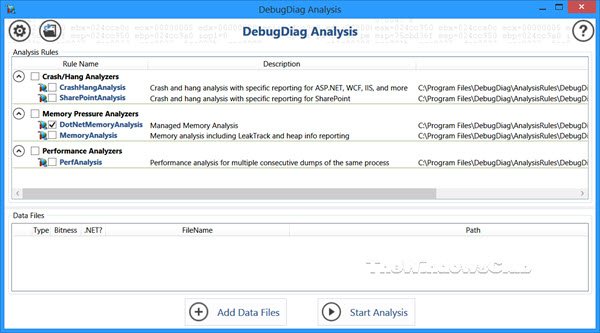Microsoft has released the Debug Diagnostic Tool, which is available at the Microsoft Download Center. The tool, also known as DebugDiag, will help you troubleshoot issues such as system hangs or crashes, slow performance, memory leaks, or fragmentation.
Debug Diagnostic Tool for Windows systems

What is new in Debugdiag? This version includes an all-new analysis engine host, which simplifies analysis rule development in .NET. and comes with a built-in reporting framework, which can be accessed from .NET.
It has built-in analysis rules focused on web data access components, COM+, SharePoint, Internet Information Services (IIS) applications, and other Microsoft software and services.
The main window has two different tabs, one used for review data collection rules, and a Processes view that allows you to browse processes, collect dumps, and stop processes that are running on the machine. The 3 problems DebugDiag primarily helps in troubleshooting are process performance, process crashes, and memory leaks.
- Process Performance: The performance monitoring feature will help troubleshoot performance issues for a specific process, or slow HTTP Response times.
- Process Crashes: The crash monitoring feature helps determine why a process terminated unexpectedly.
- Memory Leaks: The memory leak monitoring feature will track memory allocations for a process.
Debug Diagnostic Tool is released as part of the IIS Diagnostic Toolkit as well as a standalone tool. It supports Windows 11, Windows 10, Windows 8, Windows 7, Windows Server 2008, Windows Server 2008 R2, Windows Server 2012, Windows Server 2012 R2, Windows Vista, x86 and x64.
You can download it from Microsoft Download Center.
Read: How to turn off Heap Termination on corruption for Explorer.